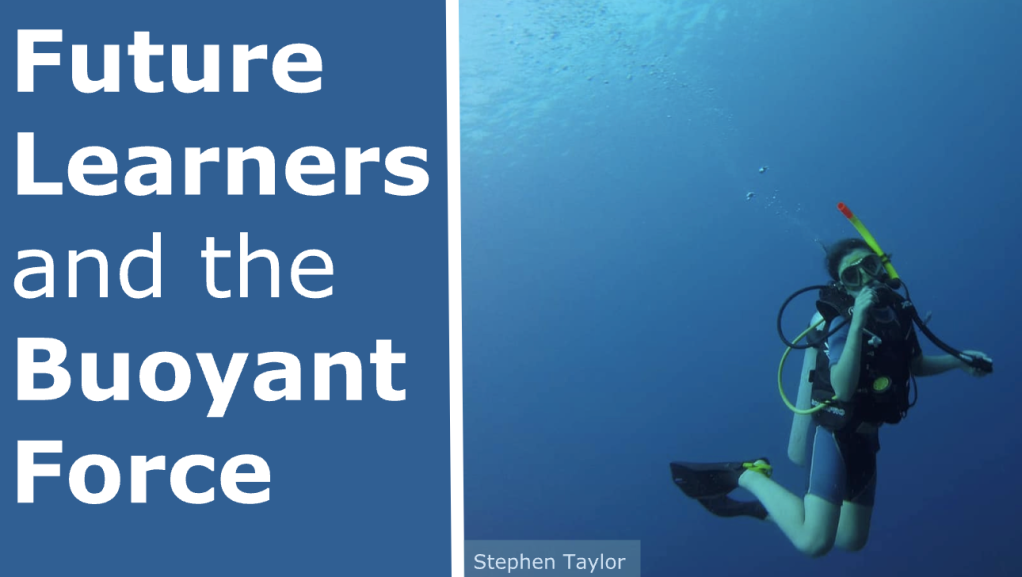This was a great challenge during the Learning2 Conference last week in Nanjing. It was my first time at the conference and I was looking for an experience that would push me and provide something to think about. I presented this short talk, and an extended session on Global Ignorance, Factfulness and Data-Informed Inquiry. You can see more action from the conference on #Learning2 on Twitter.
The “buoyant force” talk is based on an idea I started writing about in 2017 but had been thinking about as a coordinator for a while. The essence of it is that in our rush to “get ready for” the next stage, do we risk forgetting the forces that are acting on our curriculum on the way up the school? The images are a blend of my own photos and some from Unsplash.
Future of Education NOW at WAB
Here are the slides for the workshop version of The Buoyant Force, presented at WAB’s Future of Education Now “Festival of Learning” Conference. The format was a series of provocations and discussion for participants (a mix of WAB and visiting educators) to engage in reflection on the forces acting on learners through transitions.
The Big Ideas Of The Buoyant Force
There is more depth on the original post, but here are some key ideas:
- Transitions are hard, are we making them harder by disregarding the skills, knowledge, concepts, identities and motivations of learners as they push up towards us?
- How are we capitalising on the buoyant force of learner agency in our transitions? When a fired-up PYPx student transitions into MYP, what do we do with that experience? Those skills? Do we give them the opportunity to show us what they can do as continuum learners?
- Do we use this to raise the bar for inquiry and understanding?
- By misinterpreting backwards mapping as “we’ve got to get them ready for [high stakes terminal task] by practicing [high stakes terminal task]” at every stage of the continuum, are we reducing our planning to a backwash of demands?
The Buoyant Force and School Innovation
As many of our schools are in the process of change and reinvention, do we consider the buoyant force in our planning? For example, schools offering the MYP for the first time might have their older learners “test out” the Personal Project. How does that go with learners who have been enculturated to a different way of doing things? What would we expect to see with the following cohorts, who are more used to the programme?
Similarly, if we are going through dramatic change in a school, where are we investing the efforts? We can harness the buoyant force to drive the change by creating the change earlier in the continuum – and then planning for those learners pushing upwards.
Did they do something fab in Grade 8? Great, then how do we make the most of it in Grade 9? Is everyone on board? How do we expect to see this cohort raise our game?
An L2 Reflection
This was my first Learning2 Conference. Despite following it for years, there was always a clash with school commitments, prioritising others on the budget or transition. I’m so glad I finally went I’m over conferences in the regular format and the opportunity and challenge of being an L2 Leader was well worth the time and effort. The people were amazing and it felt like a productive, supportive, calm and inspiring community.
When I agreed to do the talk I had the kernel of the idea, based on the blog post. In a day, with some coaching and feedback, I was pretty happy with the product. I’m very used to leading workshops and active conference breakout sessions, so “doing a talk” was a new experience. Watching it back, there is plenty I’d change. It’s a bit TED-y. The lights were bright. But the response was positive and we had some great conversations afterwards. I am expanding this into a workshop for our school’s “Future of Education Now” Conference, where we will unpack the big ideas.
Thank-you L2 & FOEN Teams!

Thank-you for your comments.